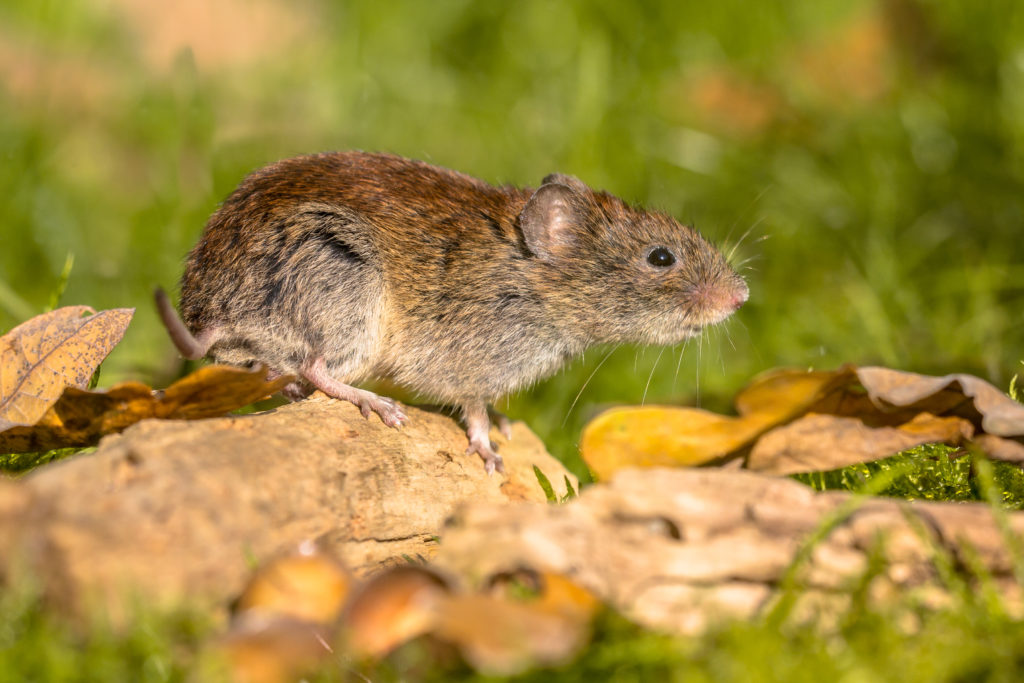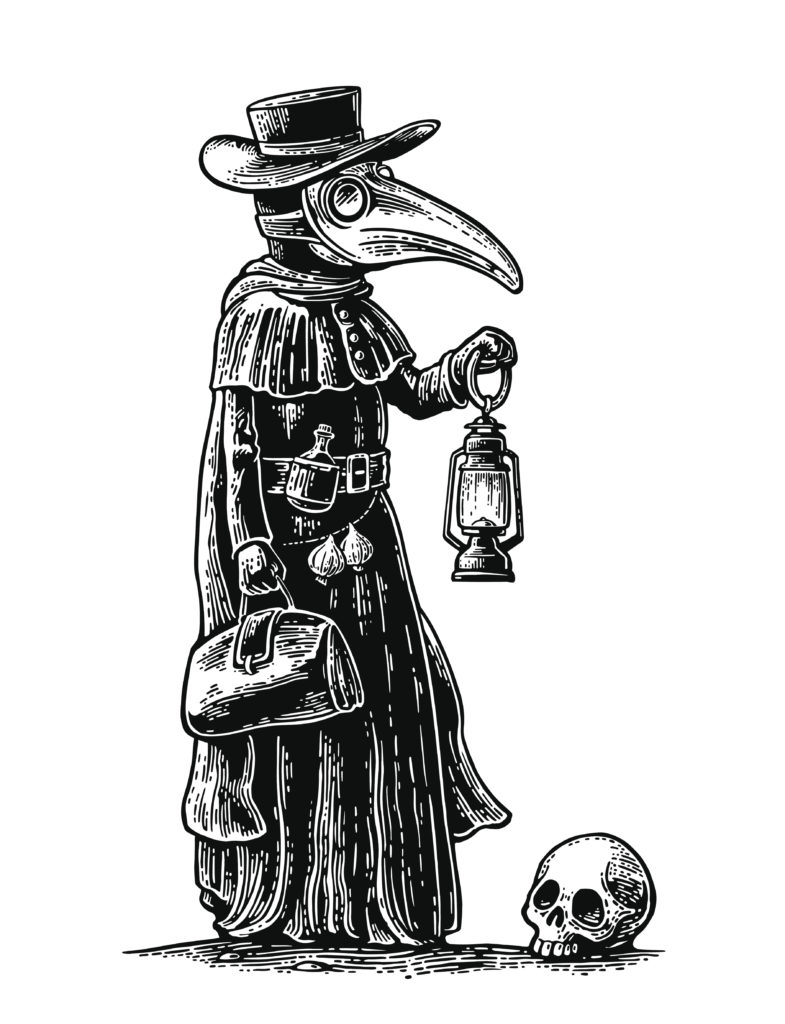Community Chickens Editor, Carla Tilghman and author Carrie Miller team up with share information with you about rodent borne diseases and some basic techniques for safely cleaning up their messes. Companion piece to Carrie Miller’s Rodents and Your Coop.
Why not just coexist? Because rodents can carry many diseases harmful to both birds and humans. Below is a list of diseases some feral rats (such as Rattus novegicus, the common brown rat), and other rodents can carry. The purpose here isn’t to scare you all into not owning chickens, OR vetted pet rats, but to share information about possible risks that you can avoid.

The most abundant and widespread of all mammals, the brown rat (Rattus norvegicus).
Zoonotic pathogens transmitted via rodent blood, urine, feces or saliva.
Hantaviruses and Carriers
Hantavirus Pulmonary Syndrome (HPS) is commonly carried by deer mice, white-footed mice, rice rats, and cotton rats are the usual culprits. Hantaviruses are usually contracted when people breath in dust contaminated with rodent urine or droppings. If you see rodent droppings in your house or chicken coop, play it safe, wear a mask and clean them up.

Peromyscus genus commonly known as the deer mouse.

White-Footed Mouse (Peromyscus Leucopus). Photographed by acclaimed wildlife photographer and writer, Dr. William J. Weber.
While HPS is more commonly found in the U.S., other parts of the world see a different virus: Hemorrhagic Fever with Renal Syndrome (HFRS). It is transmitted by the striped field mouse, brown rat, bank vole, yellow-necked field mouse. The disease primarily occurs in eastern Asia, Russia, Korea, Scandinavia, western Europe, and the Balkans. Transmission of the virus occurs through aerosolized urine or droppings.

Wild Bank vole (Myodes glareolus)
Salmonella
Salmonella (Salmonella bacterium) can be picked up from eating food or water contaminated with rodent feces (eww). The bacteria cause diarrhea, abdominal cramps, vomiting and nausea. Most people recover without treatment in 4 to 7 days. Though those with compromised immune systems will need medical treatment right away.

Culture of Salmonella bacteria. 3D illustration
Rat-Bite Fever
Streptobacillus moniliformis (North America and Europe) and Sprillum minue (Asia and Africa) are commonly known as “Rat-Bite Fever”. The bacterial infection is usually contracted through the bite or scratch of an infected rodent or by ingesting food or water contaminated with their feces. Symptoms (white appear 3 to 10 days after contact) include fever, vomiting, headache, muscle and joint pain. A rash occurs in 3 out of 4 people. Antibiotics are the most common treatment option.
Leptospira
Leptospira is a bacterial disease which can cause a wide range of symptoms including high fever, severe headache, chills, muscle aches, and vomiting, and even jaundice, red eyes, abdominal pain, diarrhea, or a rash. If left untreated the patient could develop kidney damage, meningitis (inflammation of the membrane around the brain and spinal cord), liver failure, and respiratory distress. In rare cases, death occurs. Leptospirosis is transmitted through rodent urine and is most commonly found in warm, wet areas of the world. A course of antibiotics such as doxycycline or penicillin should be given early and are usually effective.
Rats as transport hosts
Rats are also hosts to other critters that transmit diseases. And here it gets pretty complicated. For instance:
Angiostrongylus cantonensis is a parasitic worm found in rats and usually called the “rat lungworm”. Infected rats pass the larvae of the parasite in their feces, which snails and slugs then eat (again, eww). The larvae mature in the slugs, but don’t become adult worms until the rats then eat the slugs where the parasite grows to adulthood. People can ingest this parasite if they eat raw or undercooked slugs or snails. In humans, the parasite can cause a rare form of meningitis called eosinophilic meningitis (EM) which is an increase of the eosinophils (type of white blood cell) in the fluid around the brain and spinal cord. Symptoms can include headache, stiff neck and/or back, nausea, vomiting, photophobia and altered mental status. Most treatments are symptomatic and designed to support the body ability to fight the parasite.
Murine Typhus
Murine Typhus or flea-borne typhus is caused by bacteria Rickettsia typhi and occurs in tropical and subtropical climates where the fleas (and rat carriers) live. Symptoms such as fever, body aches, nausea, stomach pain, cough, and rash begin within 2 weeks after contact with infected fleas. Most people recover without needed specialized treatment beyond doxycycline.
The Black Death

Typical outfit of medieval plague doctor with bird mask,suitcase, lantern, garlic and hat.
Finally, you can’t write about rats and fleas without mentioning The Bubonic plague (Yersinia pestis), which has the distinction of being the first recorded pandemic in the 6th century Byzantine Empire under the rule of Emperor Justinian I. An estimated 25 to 50 million people died over two centuries of successive recurrences of the plague. The second major outbreak is the one most history books record; the Black Death that wiped out at least one third of Europe’s human population.
Symptoms include fever, headache, chills, weakness, vomiting, and painfully swollen lymph nodes which can enlarge to about the size of a chicken egg. Diagnosed patients are often admitted to the hospital for a round of IV antibiotics such as Doxycycline, Ciprofloxacin, Chloramphenicol and others. The plague is most common in parts of sub-Saharan Africa, rural South America and Asia, though some cases have been seen in New Mexico, Arizona, and California.
Prevention
The best prevention for picking up or transmitting these diseases is still good hand-washing. After you handle poop covered eggs, poop covered chickens, and especially if you notice rodent droppings in an area you are cleaning. Go ahead and put on a mask. If conditions are dry and you are concerned about dust, wet the area down with alcohol, household disinfectants or bleach. If you find a dead rodent, wet it down with alcohol as well. Then wipe up and mop down.
For Backyard poultry and fowl owners, the risk of catching these diseases is relatively low. But it is worth being careful and going the extra mile to limit rodent populations and keep your coops clean.
**************
Carla Tilghman is the editor of Community Chickens website at Ogden Publications and an avid researcher of all things fowl. In her spare time, she is a textile artist, gardener of herbs and dye plants and backyard chicken wrangler. You can see your art work at Lapin Textiles and her editorial work at Community Chickens.
Carrie Miller has a do-it yourself website/blog that is full of fun chicken projects. Her family is raising all-natural chickens with no antibiotics, no medications and no pesticides in Kinsman, Ohio. You can find her at Miller Micro Farm or follow her on Facebook, Instagram or Twitter.












